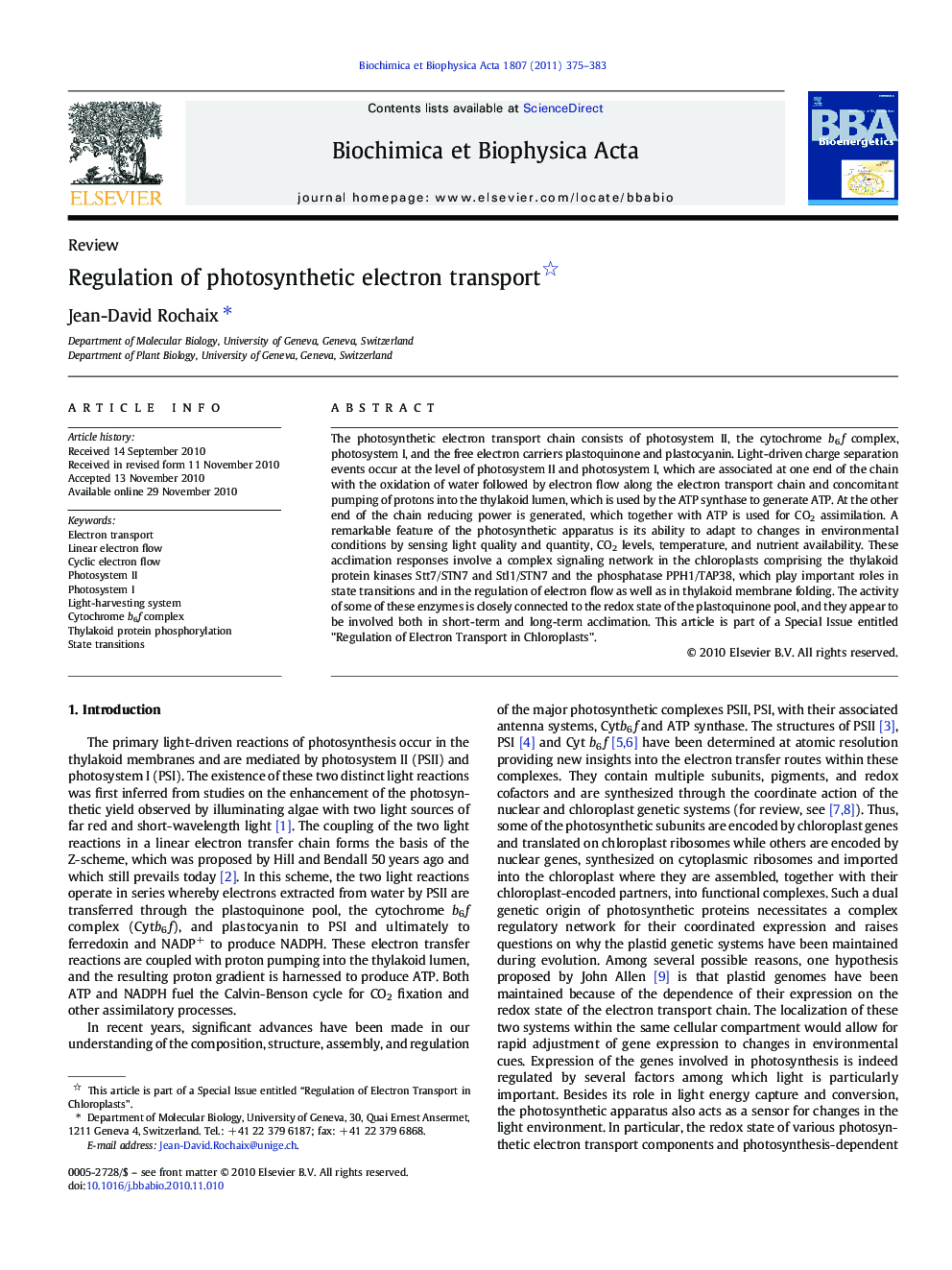| کد مقاله | کد نشریه | سال انتشار | مقاله انگلیسی | نسخه تمام متن |
|---|---|---|---|---|
| 1942805 | 1052630 | 2011 | 9 صفحه PDF | دانلود رایگان |

The photosynthetic electron transport chain consists of photosystem II, the cytochrome b6f complex, photosystem I, and the free electron carriers plastoquinone and plastocyanin. Light-driven charge separation events occur at the level of photosystem II and photosystem I, which are associated at one end of the chain with the oxidation of water followed by electron flow along the electron transport chain and concomitant pumping of protons into the thylakoid lumen, which is used by the ATP synthase to generate ATP. At the other end of the chain reducing power is generated, which together with ATP is used for CO2 assimilation. A remarkable feature of the photosynthetic apparatus is its ability to adapt to changes in environmental conditions by sensing light quality and quantity, CO2 levels, temperature, and nutrient availability. These acclimation responses involve a complex signaling network in the chloroplasts comprising the thylakoid protein kinases Stt7/STN7 and Stl1/STN7 and the phosphatase PPH1/TAP38, which play important roles in state transitions and in the regulation of electron flow as well as in thylakoid membrane folding. The activity of some of these enzymes is closely connected to the redox state of the plastoquinone pool, and they appear to be involved both in short-term and long-term acclimation. This article is part of a Special Issue entitled "Regulation of Electron Transport in Chloroplasts".
Research Highlights
► Linear and cyclic electron flow are required for efficient photosynthetic activity.
► The photosynthetic apparatus constantly adapts to changes in light conditions.
► Besides providing energy the photosynthetic apparatus acts as a light sensor.
► Excess absorbed light energy is dissipated through non-photochemical quenching.
► State transitions equilibrate light excitation energy between the two photosystems.
Journal: Biochimica et Biophysica Acta (BBA) - Bioenergetics - Volume 1807, Issue 3, March 2011, Pages 375–383